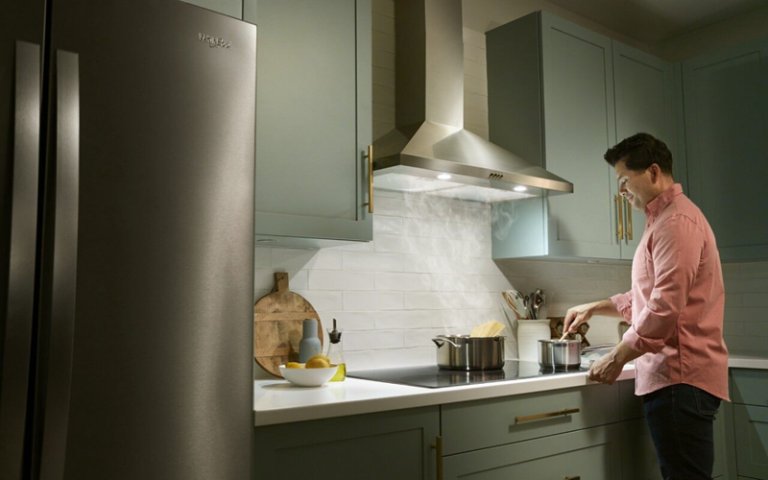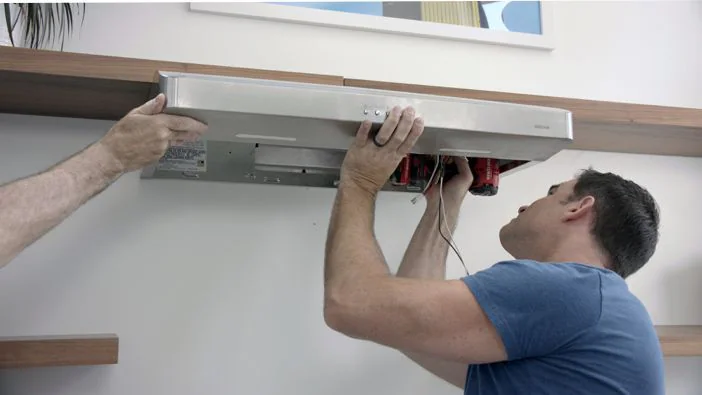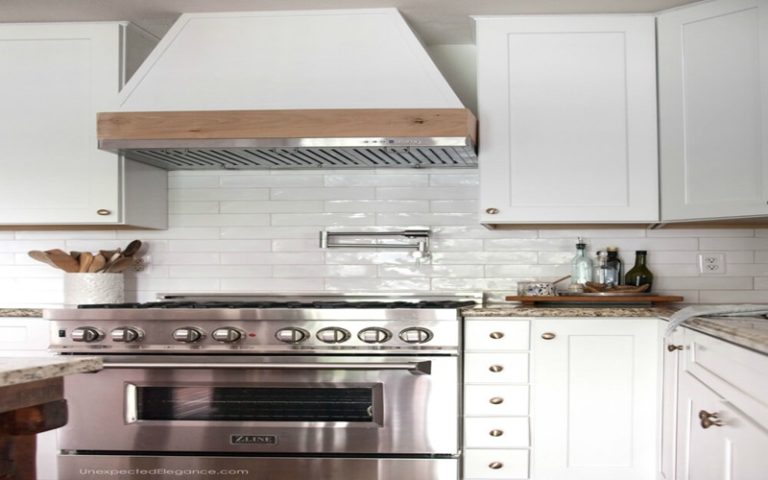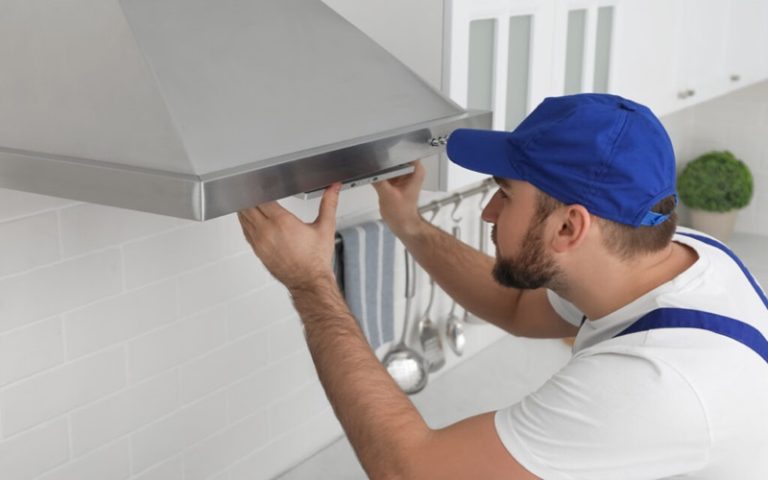The Ultimate Guide To Microwave Range Hoods Ductless
When renovating a kitchen, one of the most important decisions homeowners face is choosing the right appliances. Among them, the microwave range hood stands out as a multifunctional device that not only heats and cooks food but also serves as a ventilation system. One common question many ask is: Are microwave range hoods ductless? In this comprehensive guide, we’ll delve into the differences between ducted and ductless microwave range hoods, their benefits, drawbacks, and tips for choosing the right one for your kitchen.
What is a Microwave Range Hood?

Before determining whether these appliances are ductless, it’s essential to understand what a microwave range hood is. A microwave range hood, often referred to as an over-the-range (OTR) microwave, is a combination appliance. It serves dual purposes: heating and cooking food like a regular microwave and ventilating smoke, odors, and grease from your stovetop.
This dual functionality saves space, especially in smaller kitchens, making it an attractive option for those looking to maximize their kitchen efficiency.
Ducted vs. Ductless Microwave Range Hoods
1. Ducted Microwave Range Hoods

A ducted microwave range hood is connected to a duct system that leads air outside of your home. When the fan in the microwave hood is turned on, it pulls in the air from above your stovetop, filters out grease and odors, and then expels the air through ducts to the exterior.
Pros of Ducted Microwave Range Hoods:
- Effective Ventilation: Ducted hoods are highly effective at removing smoke, steam, and cooking odors from the kitchen.
- No Recirculation: Since the air is vented outside, there is no need to worry about air recirculating back into your kitchen, keeping indoor air quality high.
- Lower Noise Levels: Ducted systems tend to be quieter as the noise from the fan is partially absorbed by the ductwork.
Cons of Ducted Microwave Range Hoods:
- Complex Installation: Installing a ducted system can be complex and often requires professional help. The process might involve cutting into walls or ceilings to install the ducts.
- Limited Flexibility: The range hood must be positioned in a location where it can be easily connected to an exterior vent, limiting your kitchen design options.
- Higher Cost: Due to the complexity of installation and the need for ductwork, ducted systems are typically more expensive.
2. Ductless Microwave Range Hoods

Ductless microwave range hoods, also known as recirculating hoods, operate without external ductwork. Instead of venting air outside, these systems use a combination of grease filters and charcoal filters to clean the air before recirculating it back into the kitchen.
Pros of Ductless Microwave Range Hoods:
- Easy Installation: Ductless systems are easier to install since they don’t require any external venting. They can be placed anywhere in the kitchen without the need for complicated ductwork.
- Flexibility in Design: Because they aren’t tied to an exterior vent, ductless microwave hoods offer more flexibility in terms of placement, giving you more options for your kitchen layout.
- Lower Cost: Without the need for ductwork, ductless systems are usually less expensive to install.
Cons of Ductless Microwave Range Hoods:
- Less Effective Ventilation: Ductless systems are generally less effective at removing smoke and odors since they recirculate the air back into the kitchen.
- Filter Maintenance: The filters in ductless systems need to be replaced or cleaned regularly to maintain their efficiency. Neglecting this can result in poor air quality and reduced performance.
- Higher Noise Levels: Ductless hoods can be noisier since all the air filtration happens within the unit itself.
Are Most Microwave Range Hoods Ductless?
So, are most microwave range hoods ductless? The answer depends on the market and your location. In urban areas where many homes are apartments or condos, ductless microwave range hoods are more common due to the ease of installation and the lack of external walls to vent air. In contrast, in suburban or rural areas where homes are typically larger and more spread out, ducted systems might be more prevalent.
Many microwave range hoods on the market today offer both ducted and ductless options, giving homeowners the flexibility to choose based on their specific needs and kitchen setup.
Choosing Between Ducted and Ductless Microwave Range Hoods
When deciding between a ducted and ductless microwave range hood, consider the following factors:
1. Kitchen Layout and Size
- Ducted: Ideal for larger kitchens with exterior walls where ductwork can be easily installed.
- Ductless: Suitable for smaller kitchens, apartments, or spaces where installing ductwork is not feasible.
2. Ventilation Needs
- Ducted: If you frequently cook with high heat, fry foods, or produce a lot of smoke, a ducted system is the better choice for effective ventilation.
- Ductless: If you mostly reheat food or do light cooking, a ductless system might suffice.
3. Installation Budget
- Ducted: Be prepared for higher installation costs, including potential structural changes to your home.
- Ductless: More budget-friendly, especially if you’re looking to do a DIY installation.
4. Maintenance
- Ducted: Minimal maintenance once installed, though the ducts should be inspected periodically.
- Ductless: Regular filter replacement or cleaning is necessary to ensure the system works efficiently.
5. Aesthetic Preferences
- Ducted: Typically larger and may require a more robust design to accommodate the ductwork.
- Ductless: Sleeker and more compact, offering a modern look without the need for external components.
Installation Considerations
Regardless of whether you choose a ducted or ductless microwave range hood, proper installation is crucial for optimal performance. Here are some key considerations:
1. Professional vs. DIY Installation
- Ducted: Due to the complexity of installing ductwork, it’s usually best to hire a professional.
- Ductless: While easier to install, professional help can ensure that the unit is properly secured and functions correctly.
2. Location
- Ducted: Ensure that the location allows for straightforward ductwork installation. Avoid placing the hood in areas far from an exterior wall.
- Ductless: Placement is more flexible, but ensure the unit is centrally located above the stovetop for maximum efficiency.
3. Power Supply
- Both types of hoods require a dedicated power supply. Ensure your kitchen wiring can handle the additional load, especially if you’re replacing an older unit.
Conclusion
When it comes to the question, “Are microwave range hoods ductless?” The answer is: They can be, but they don’t have to be. Both ducted and ductless microwave range hoods have their advantages and drawbacks, and the right choice depends on your specific needs, kitchen layout, and budget.
Ducted systems offer superior ventilation and are ideal for heavy-duty cooking, but they come with a higher installation cost and complexity. On the other hand, ductless systems are easier to install, more flexible in placement, and generally less expensive, making them a practical choice for many modern kitchens.
Before making your decision, consider your cooking habits, kitchen design, and long-term maintenance preferences. With the right choice, your microwave range hood will not only enhance your cooking experience but also improve the overall air quality in your home.
Welcome to bestductlessrangehoods.com, your go-to resource for everything related to ductless range hoods! I’m Linda Marie, the founder and chief editor of this site. With a deep passion for home improvement and an unwavering focus on kitchen appliances, I started this website to help homeowners, renovators, and kitchen enthusiasts navigate the world of ductless range hoods.







